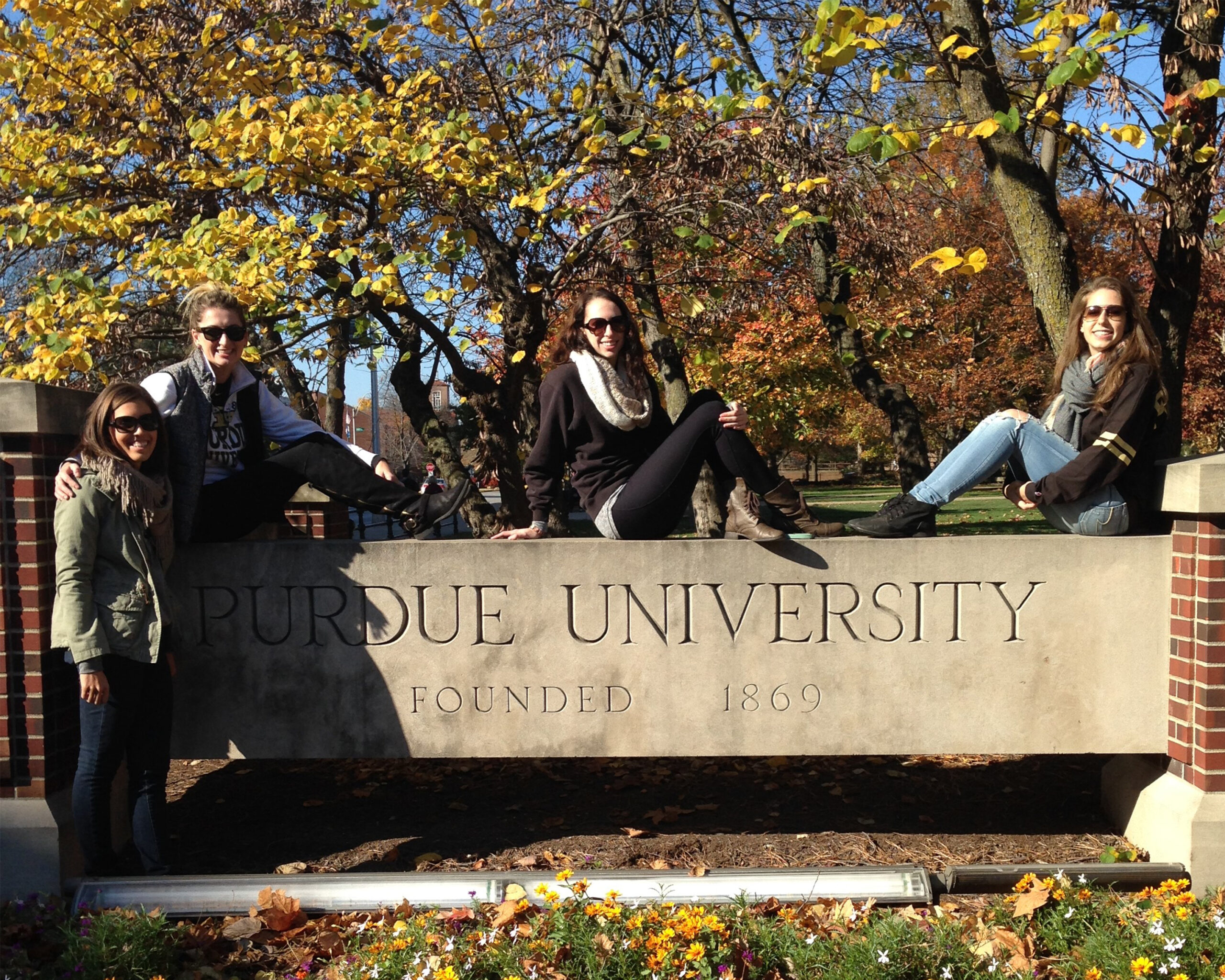Seeing sounds
Alumna co-invents world's first smart home hearing system
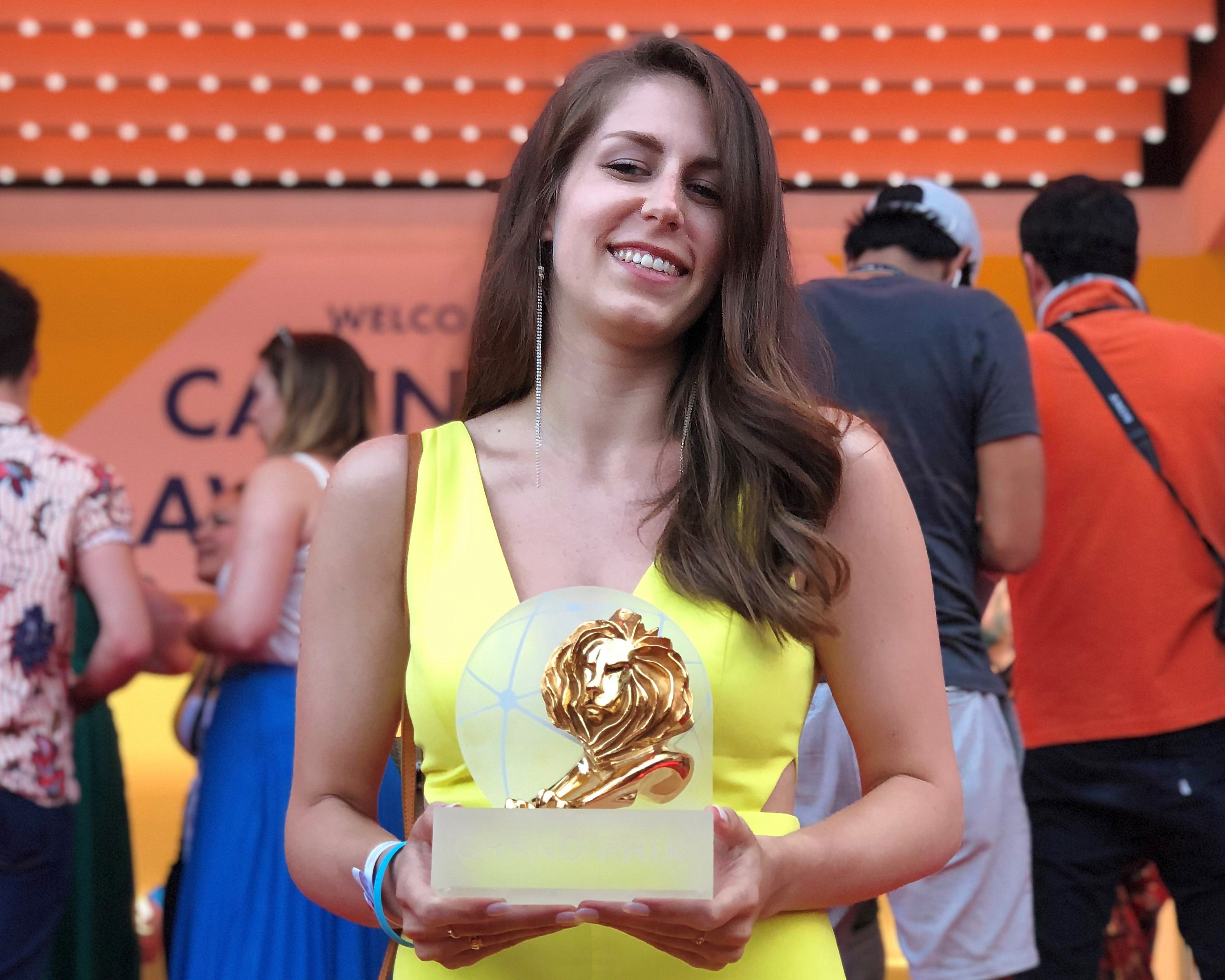
Corinne Feight is on a mission to make the home a safer place for people with hearing loss.
Feight – a 2013 Purdue graduate in professional writing and photography – co-invented SEE SOUND, the world’s first smart home hearing system for the Deaf and hard of hearing. She created the device in partnership with Kristen Bell, a fellow associate creative director with healthcare agency Area 23, and Wavio, a Deaf-owned software company that specializes in sound recognition technology.
“Hearing is easy to take for granted, but not being able to access sounds can be disorienting, dangerous, and could mean life or death for the millions of people living with hearing loss,” said Feight, a native of Island Lake, Illinois. “Current accessibility products are extremely limited. Assistive hearing devices, like cochlear implants, help indicate or amplify sound, but don’t assign meaning to what’s heard. Other visual cues help notify of a doorbell or alarm, but are only single use.
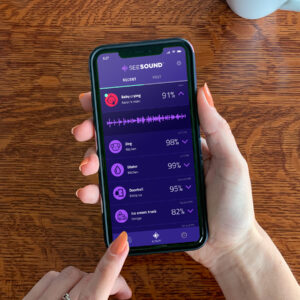
“The Deaf and hard of hearing simply don’t have anything that can help them distinguish a microwave from a crying baby, from glass breaking, and so on, let alone anything that can do so with confidence.”
The Johns Hopkins Cochlear Center for Hearing and Public Health estimates that 44.6 million Americans age 10 and older have varying degrees of hearing loss, a number that is expected to grow to 74.8 million by the year 2060.
SEE SOUND, which launched for pre-orders in the U.S. on June 25, is designed to identify and distinguish critical and convenient home sounds through the use of artificial intelligence and sound models. The device fits in a 3.2-square-inch space, plugs directly into wall outlets, and includes WiFi and Bluetooth capabilities. The device is programmed to hear 75 different household sounds – such as yelling, beeping, or sirens – and immediately notify users what sound it identified via connected smart devices.
“We trained the SEE SOUND machine-learning model with sound clips from YouTube,” said Spencer Montan, chief operating officer at Wavio. “Over 2 million videos were analyzed, categorized, and converted into 10-second sound clips, each containing a discreet sound. Each type of sound in our data model, like yelling, is comprised of several thousand YouTube audio samples. These sounds range from common household noises to alerts that could mean life or death.”
From concept to creation
The SEE SOUND home hearing system was made possible by a program at Area 23 known as “What if,” which encourages employees to generate creative ideas to pitch to clients or to pursue personally. Feight and Bell initially conceived the SEE SOUND concept after collaborating on a project for an unrelated healthcare brand.“When Corinne and I were getting to know each other, I would often share stories I had about my life and what it was like being married to a Deaf person,” Bell said. “These stories were mostly funny moments like how I enjoy sneaking up and scaring him, which is quite easy. But there were times when I have been concerned for our safety, like when I’ve hurt myself in another room and he’s unaware of my cries for help.”
Feight said that one day, she and Bell asked themselves, “Why can’t we solve this? Why are we waiting for someone else to step in?”
“The more we talked about it, the more we felt that the home was sort of this untapped space,” Feight said. “We look at products like the Google Homes and the Amazon Alexas, and we say, ‘Why don’t those work for the Deaf?’ I think, ultimately, this whole idea would never have been had those kind of big tech companies considered the accessibility of their products.”
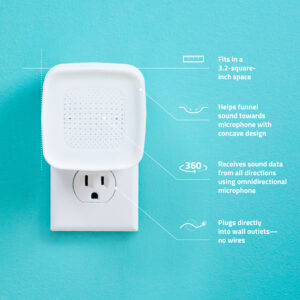
Feight and Bell often worked after hours to develop the business case for SEE SOUND while continuing in their primary roles as associate creative directors for their assigned brands.
They performed extensive research to gain a better understanding of customer needs and to determine how the product should work. They surveyed people who are Deaf or hard of hearing and learned that in most cases, people had unique stories about how they were unaware of certain sounds in their home.
“While it’s nice to know your popcorn is done, it’s very important to know that your child has fallen down the stairs or that your water has been left on all night and is flooding in your kitchen,” Feight said. “We had to talk through not only the rationale but also why the current landscape of products isn’t adequate and isn’t doing what it should be doing. ‘Here’s the problem, and what if we did this? What if we solved this?’”
Area 23 executives initially did not select the proposal for development, but Feight and Bell remained persistent, seeking feedback that helped them improve their concept. Area 23’s CEO eventually gave them the green light to proceed, however, kicking off an incredible journey.
“When we were turned down, my initial thought was ‘OK, then explain to me why, give me the reasons why, and I can move forward and improve on it,” Feight said. “I also feel that Kristen, my partner, living this every day and wanting this and needing this kind of product really both made us feel that it was worth pushing for.”
Partnering with Wavio
Once they gained approval, Feight and Bell selected a team of volunteers from within the agency, including colleagues with previous account management and technology experience. The group began curating sound lists and building the software and hardware for the product.However, they were still missing a critical component.
“Kristen and I struggled as we worked through this problem to really have that credibility,” Feight said. “We’re two hearing girls who are creating a Deaf product, and we struggled a lot with needing to partner with someone to help validate that we were doing the right thing and that we were taking into consideration the opinions of the individuals the product was made for.”
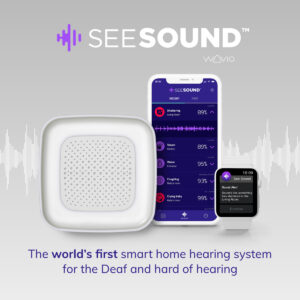
The pair started searching for a partner about six months into the project. They contacted large advocacy groups and other organizations that specialized in products and services involving the Deaf and hard of hearing, but nothing panned out until they received a tip about a small, Deaf-owned software company that was also working on a solution similar to SEE SOUND.
One of Bell’s former classmates at the Rochester Institute of Technology pointed them toward Wavio, whose CEO, Greyson Watkins, is a fellow RIT alumnus.
“Wavio was founded in 2015 after realizing the numerous of problems associated with missing out on critical sound events, which made us one of the first firms to specialize in sound recognition product innovation and design,” Watkins said. “As smart speakers were taking off at that time, we were disappointed that they could only serve voice-based commands with nothing to do with listening and reacting to environmental sound events like coughing, calling out for help, listening to fire alarms, glass breaking, and many more.”
Recognizing the similar goals and synergies between the two companies, Feight and Bell proposed a partnership, which resulted in the merger of Area 23’s hardware solution and Wavio’s software solution. After developing early prototypes, the new partners accepted their first pre-orders. In June 2019, SEE SOUND was even awarded top honors at the Cannes Lions International Festival of Creativity in Cannes, France.
“It’s really promising that our company, Area 23, was willing to take such a big financial risk on something like this,” Feight said. “I think, had they not had the resources, and had we been a smaller company, nothing like this would have been able to come to fruition, but we worked really hard, internally, and this is actually the first product launch ever for Area 23, so it is a really amazing accomplishment not only for me personally, but also at an agency level.”
Although SEE SOUND is still in its infancy, Bell and her husband have already experienced the product’s benefits while testing prototypes.
“It’s cool to see his reaction to a sound being recognized for him,” Bell said. “It alleviates the burden of trying to hear and translate any given sound his implant picks up. What most people don’t understand about cochlear implants is that it only indicates sound, and it’s on the Deaf person to translate this obscure noise. My husband literally can’t tell the difference between the sounds of laughter or crying.
“SEE SOUND is newfound confidence in living independently. We have dreams of having a fully accessible home one day.”
